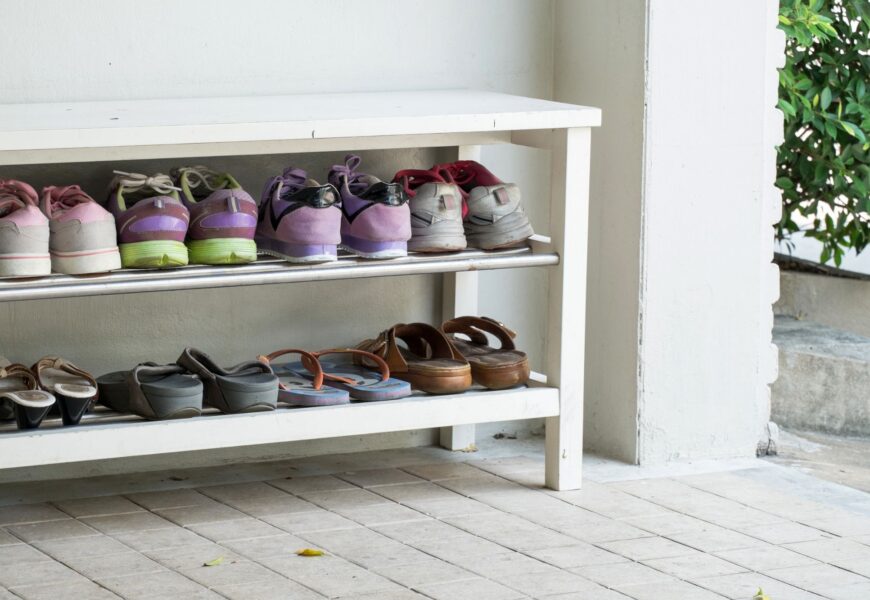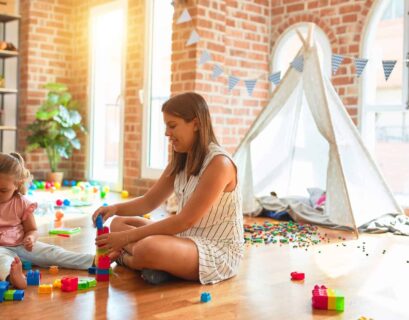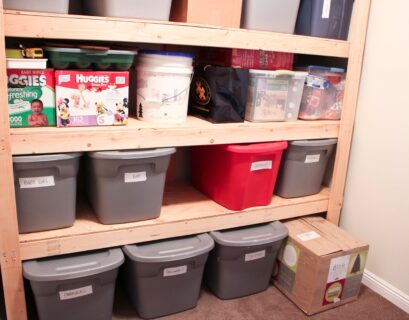Keeping your home clean and healthy can be a challenge, especially with the constant influx of dirt and germs from outside. One simple yet effective way to maintain a cleaner living environment is by implementing a no-shoes policy inside your home. Here’s how you can establish this rule and the benefits it brings to your household.
Benefits of a No-Shoes Policy
- Reduced Dirt and Dust: Shoes track in dirt, dust, and debris from outside, making floors harder to keep clean. A no-shoes policy can significantly reduce the amount of dirt that enters your home.
- Improved Indoor Air Quality: By keeping outdoor pollutants out, you can improve the air quality inside your home. This is particularly beneficial for those with allergies or respiratory issues.
- Less Wear and Tear on Floors: Shoes can cause scratches and scuffs on hardwood, tile, and carpet. Keeping shoes off indoors helps preserve your flooring.
- Enhanced Hygiene: Shoes can carry bacteria, pesticides, and other contaminants. A no-shoes policy helps keep these harmful substances from spreading throughout your home.
- Increased Comfort: Walking barefoot or in socks can be more comfortable and relaxing than wearing shoes inside.
How to Implement a No-Shoes Policy
- Communicate with Your Household Start by discussing the no-shoes policy with everyone in your household. Explain the benefits and get their buy-in. A unified approach makes it easier to enforce the new rule.
- Create a Designated Shoe Area Set up a designated area near the entrance where everyone can remove and store their shoes. This could be a shoe rack, a bench with storage, or a set of cubbies. Make sure it’s easily accessible and convenient.
- Provide Indoor Footwear Options Offer comfortable indoor footwear like slippers or house shoes for family members and guests. This encourages compliance and keeps feet warm and protected.
- Use Signs or Reminders Place a friendly reminder near the entrance, such as a sign or a doormat that says, “Please Remove Your Shoes.” This helps guests and family members remember the policy.
- Lead by Example Be consistent in following the no-shoes policy yourself. When family members see you adhering to the rule, they’re more likely to follow suit.
- Have a Plan for Guests Politely inform guests about your no-shoes policy when they arrive. Provide a designated spot for their shoes and offer them slippers or socks to wear inside. Most guests will appreciate the gesture and respect your request.
Tips for Success
- Keep the Entryway Clean Maintain a clean and organized entryway to make it inviting for people to remove their shoes. Regularly clean the shoe storage area to prevent it from becoming cluttered.
- Be Flexible While it’s important to stick to the policy, be flexible in certain situations. For example, delivery workers or repair technicians may need to wear shoes for safety reasons. In such cases, provide shoe covers or allow exceptions as needed.
- Use Doormats Place doormats both outside and inside the entrance to catch dirt and moisture before shoes are removed. This helps keep your entryway cleaner.
- Clean Floors Regularly Even with a no-shoes policy, it’s essential to clean your floors regularly. Vacuum carpets and rugs, and mop hard floors to keep them in top condition.
- Encourage Habit Formation It can take time for everyone to get used to the new rule. Encourage the habit by gently reminding family members and guests. Positive reinforcement can help make the no-shoes policy a natural part of your household routine.
Conclusion
Implementing a no-shoes policy inside your home is a simple yet effective way to maintain a cleaner, healthier living environment. By reducing the amount of dirt, germs, and wear and tear on your floors, you can create a more comfortable and inviting space for your family and guests. Start today by setting up a designated shoe area, providing indoor footwear, and communicating the benefits of the policy to everyone in your household. With a little effort and consistency, you’ll soon enjoy the many advantages of a no-shoes home.











